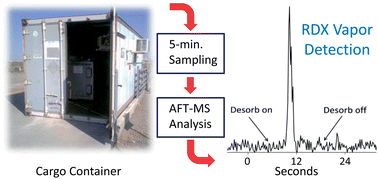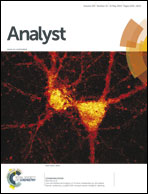Optimizing detection of RDX vapors using designed experiments for remote sensing
Abstract
This paper presents results of designed experiments performed to study the effect of four factors on the detection of RDX vapors from desorption into an atmospheric flow tube mass spectrometer (AFT-MS). The experiments initially included four independent factors: gas flow rate, desorption current, solvent evaporation time and RDX mass. The values of three detection responses, peak height, peak width, and peak area were recorded but only the peak height response was analyzed. Results from the first block of experiments indicated that solvent evaporation time was not statistically significant at the 95% confidence level. A second round of experiments was designed and executed using flow rate, current, and RDX mass as factors and the results were used to create a model to predict conditions resulting in maximum peak height. Those conditions were confirmed experimentally and used to obtain data for a calibration model. The calibration model represented RDX amounts ranging from 1 to 25 pg desorbed into an air flow of 7 L min−1. Air samples from a shipping container that held 2 closed explosive storage magazines were collected on metal filaments for varying amounts for time ranging from 5 to 90 minutes. RDX was detected from all of the filaments sampled by desorption into the AFT-MS. From the calibration model, RDX vapor concentrations within the shipping container were calculated to be in the range of 1 to 50 parts-per-quadrillion (ppqv) from data collected on 2 separate days.


 Please wait while we load your content...
Please wait while we load your content...